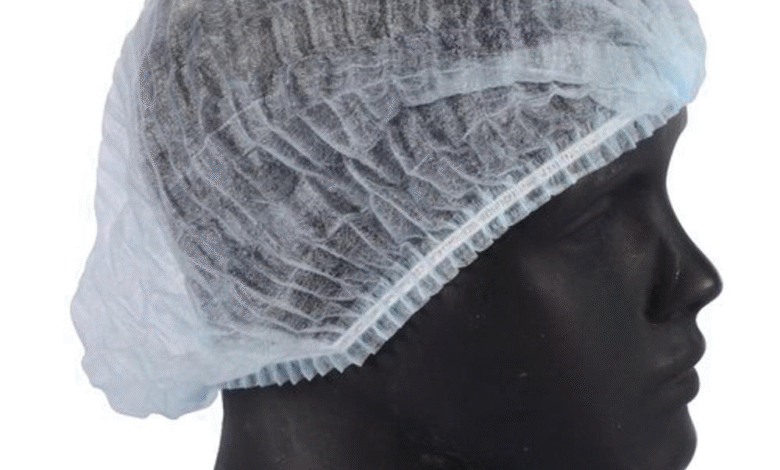Modular Hygiene: Insertion Tubes and Disposable Caps in Endoscopy

Endoscopic procedures are the advance of modern diagnostics and minimally invasive treatment, which provide high-quality visual images and effective work with patients. However, due to the growing popularity of these procedures, it becomes more challenging to guarantee hygiene, patient safety, and efficient reprocessing. Among the many components of an endoscope, insertion tubes and disposable caps stand out as unsung heroes in maintaining hygiene and procedural effectiveness.
Although these two components are extremely different in their appearance and mechanism, they both play a vital role in the endoscopy infection control as well as efficiency. In this article, we explore how endoscope insertion tubes and disposable caps enhance clinical outcomes, reduce contamination risks, and point toward a future of modular, safer, and more sustainable endoscopy practices.
What is the Endoscope Insertion Tube?
The most flexible, tactile part of a flexible endoscope is its insertion tube. This is the long slender part that gets inserted directly into the body of the
patient- most often gastrointestinal or respiratory tract. This tube houses essential channels such as the biopsy channel, air/water channel, suction channel, and light guide fibers. It also comprises the bending and tip parts, which manage to slip through internal structures.
Constructed with precision, the insertion tube must be durable, water-tight, flexible, and biocompatible. Its multi-layered construction includes a braided metal mesh, polymer sheaths, and an outer coating designed for smooth passage through the anatomy. One of the most important features of its design is flexibility versus control. It needs to be soft enough to be able to manipulate through complicated internal channels, but strong enough to provide structure and contain delicate internal parts.
Here, it should be noted that when performing endoscopy, the endoscope comes into direct contact with the mucosal lining. Therefore, the insertion tube is a prime source of cross-contamination unless properly cleaned and disinfected. It also has a tendency of wearing and tearing and this can affect its level of functionality and hygiene unless checked. The process of reprocessing these tubes- cleaning, disinfecting and examining between uses is laborious and resource-consuming.
Manufactures have thus started to look at more modular and semi-disposable designs, where the insertion tubes can be changed or combined with disposable coverings. This assists in ensuring a high level of hygiene and reducing the maintenance down time in a high traffic clinical environment.
Disposable Caps: A Small Innovation with a Big Impact
Disposable endoscope caps are typically used at the distal end of an insertion tube and are important in enhancing hygiene and efficiency of the procedures. Despite their small size, they are strategically valuable because of a few properties: they shelter sensitive optics and nozzles, aid in suction and irrigation, and provide a single-use patient-to-patient contamination barrier.
In the past endoscope caps were designed as reusable items and required high-efficiency cleaning and sterilizing, a process that is subject to human error and mechanical shortcomings. Reusable caps posed risks of biofilm formation, microscopic residue, and cross-infection even after rigorous reprocessing. This challenge was particularly evident in duodenoscopes, which have complex designs and are notoriously difficult to clean.
Disposable caps have emerged as an effective, low-cost solution to this challenge. They are intended to be used once, which removes the burden of reprocessing, enhances turnaround time, and lowers the chance of infection transmission. Moreover, pre-assembled disposable caps minimize the need for intricate handling, reducing manual errors during preparation and post-procedure cleanup.
In high-volume endoscopy centers, disposable caps are increasingly seen as non-negotiable hygiene tools, not just add-ons. They correlate with international standards of infection control and assist clinical teams in ensuring high levels of safety without imposing additional operational burden.
Combining Insertion Tubes and Disposable Caps for Safer Procedures
The integration of high-quality endoscope insertion tubes with single-use disposable caps creates a more good infection prevention system in endoscopic practice. No doubt, the insertion tube is central to delivering diagnostic and therapeutic function. The disposable cap acts as a defensive shield at the interface between the patient and the endoscope’s internal mechanisms.
These elements together help to address the most serious gaps in hygiene flexible endoscopy:
As semi-permanent devices, endoscope insertion tubes require standard, yet complicated reprocessing, where any negligence might lead to contamination. Disposable caps, being replaced after each procedure, offer an extra layer of security that ensures no microbial residue from previous patients is transferred.
This duo reduces the chances of cross-contamination, particularly, in high-risk procedures, such as ERCP or bronchoscopies. Furthermore, the use of disposable caps may reduce the reprocessing burden. This allows the healthcare facilities to optimize labor and resources while upholding hygiene standards.
The clinical outcome is a safer, more smooth, and quicker turnover of patients, a requirement in hospitals and clinics faced with a tighter schedule and growing number of procedures.
Trends Toward Fully Disposable Endoscopy Components:
As the world is progressing towards advancement rapidly, the endoscopes and its components are also advancing. COVID-19 served to accelerate this trend, as there is increased awareness regarding surface contamination, airborne particle matters, and healthcare-acquired infections (HAIs).
A number of firms have introduced single-use endoscopes, especially in bronchoscopy, urology and GI screening. They are disposable and do not allow any reprocessing. Although cost is a prohibiting factor, particularly to high-end imaging devices, insertion tube covers, valve kits, and caps are inexpensive disposable add-ons.
Additionally, hybrid models are gaining popularity. In hybrid models, the reusable core is taken together with disposable outer layers. These designs enable health care providers to compromise between hygiene, image quality and cost effectiveness.
Regulations are also taking a lag. The use of practices that include disposable components is becoming more popular among health authorities as they view them as scalable to address cross-contamination issues without overloading clinical teams.
Conclusion:
Endoscopic hygiene is based on the interaction of innovation and clinical feasibility. The endoscope insertion tube represents the precision and durability needed to perform safe internal procedures, while disposable caps bring simplicity, hygiene, and infection control to the forefront.
These elements combined constitute the spine of modular hygiene in endoscopy, which is a concept that puts the safety of the patient first, decreases contamination and promotes clinical efficiency. With the increasing pressure on healthcare systems to achieve greater results at a decreasing budget, the concept of combining semi-permanent structures with disposable accessories is not a trend, but a logical step in the endoscopic care development.
In the journey from reusability to disposability, both the insertion tube and the disposable cap serve as vital touchpoints—quietly improving every patient interaction and strengthening the integrity of medical diagnostics.




